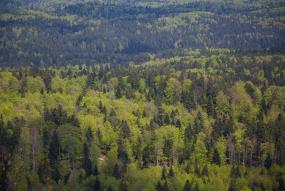
Types of HCVs

Species diversity
Concentrations of biological diversity including endemic species, and rare, threatened or endangered species, that are significant at global, regional or national levels.

Landscape-level ecosystems and mosaics
Intact forest landscapes and large landscape-level ecosystems and ecosystem mosaics that are significant at global, regional or national levels.

Ecosystems and habitats
Rare, threatened, or endangered ecosystems, habitats or refugia.

Critical ecosystem services
Basic ecosystem services in critical situations, including protection of water catchments and control of erosion of vulnerable soils and slopes.

Community needs
Sites and resources fundamental for satisfying the basic necessities of local communities or Indigenous Peoples (for livelihoods, health, nutrition, water, etc.), identified through engagement.

Cultural values
Sites, resources, habitats and landscapes of global or national cultural, archaeological or historical significance, and/or of critical cultural, ecological, economic or religious/sacred importance.
The HCV approach
We use the HCV approach – identifying, managing and monitoring – in our certification standards (which influence FSC-certified forests or products) and more generally as a resource for conservation planning. FSC seeks to maintain, enhance and promote the importance of these values.
HCVs are applicable to any operation, big or small, however, paying attention to HCVs does not mean that you have to turn everything into a conservation area though. Furthermore, some global retailers and banks have integrated HCV requirements into their procurement and investment policies.
The assessment process includes identifying HCVs that may exist in a forest. Forest managers have to assess, through both scientific assessments and through engagement with affected and interested stakeholders, whether HCVs are actually present in their forests. The results are recorded and mapped.
A key part of HCVs is ensuring activity in forests does not have a negative impact on biodiversity – that is, the diversity within and between species, and the ecosystem as a whole, including forests. For FSC, maintaining and implementing management of biodiversity and HCVs goes hand in hand.
